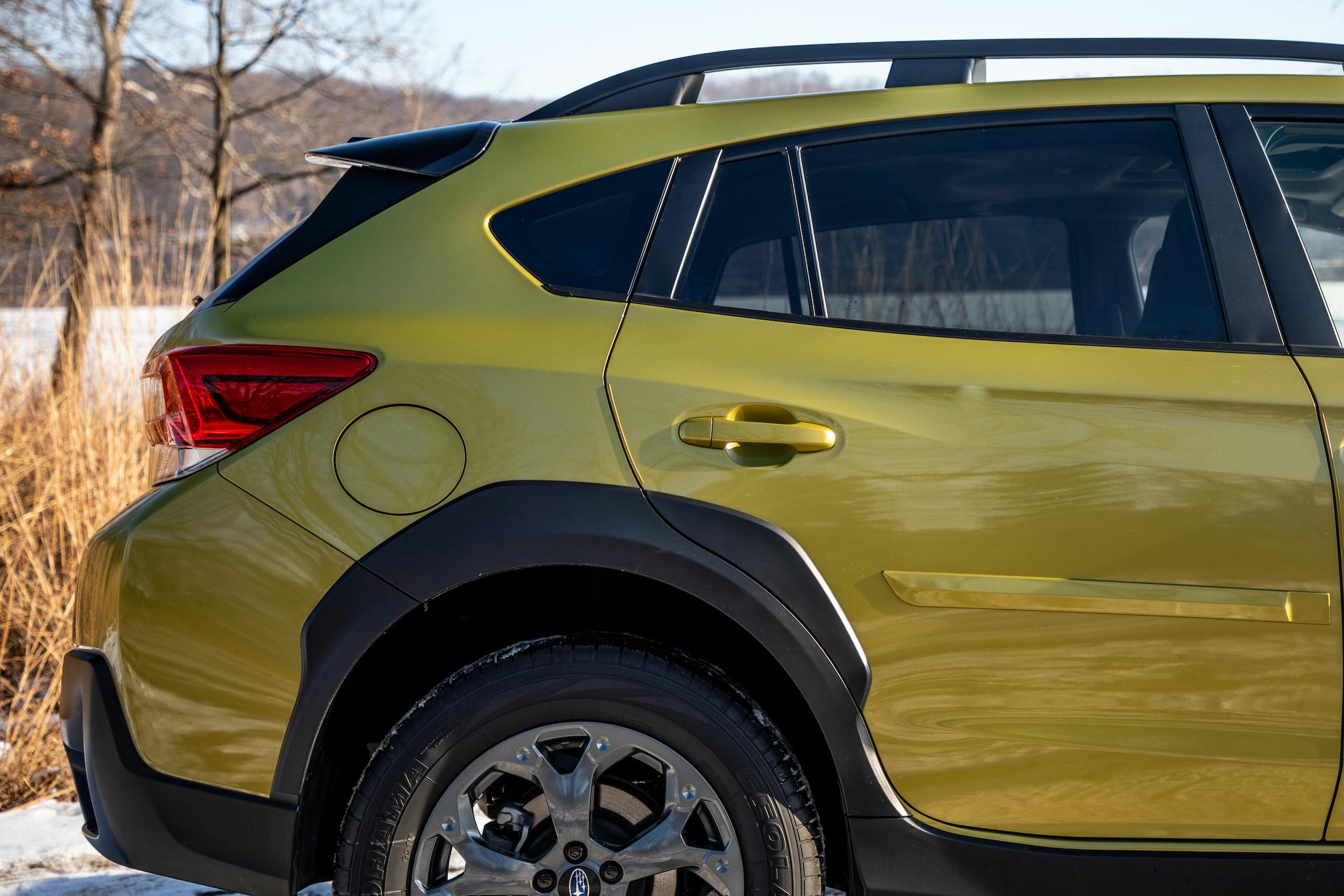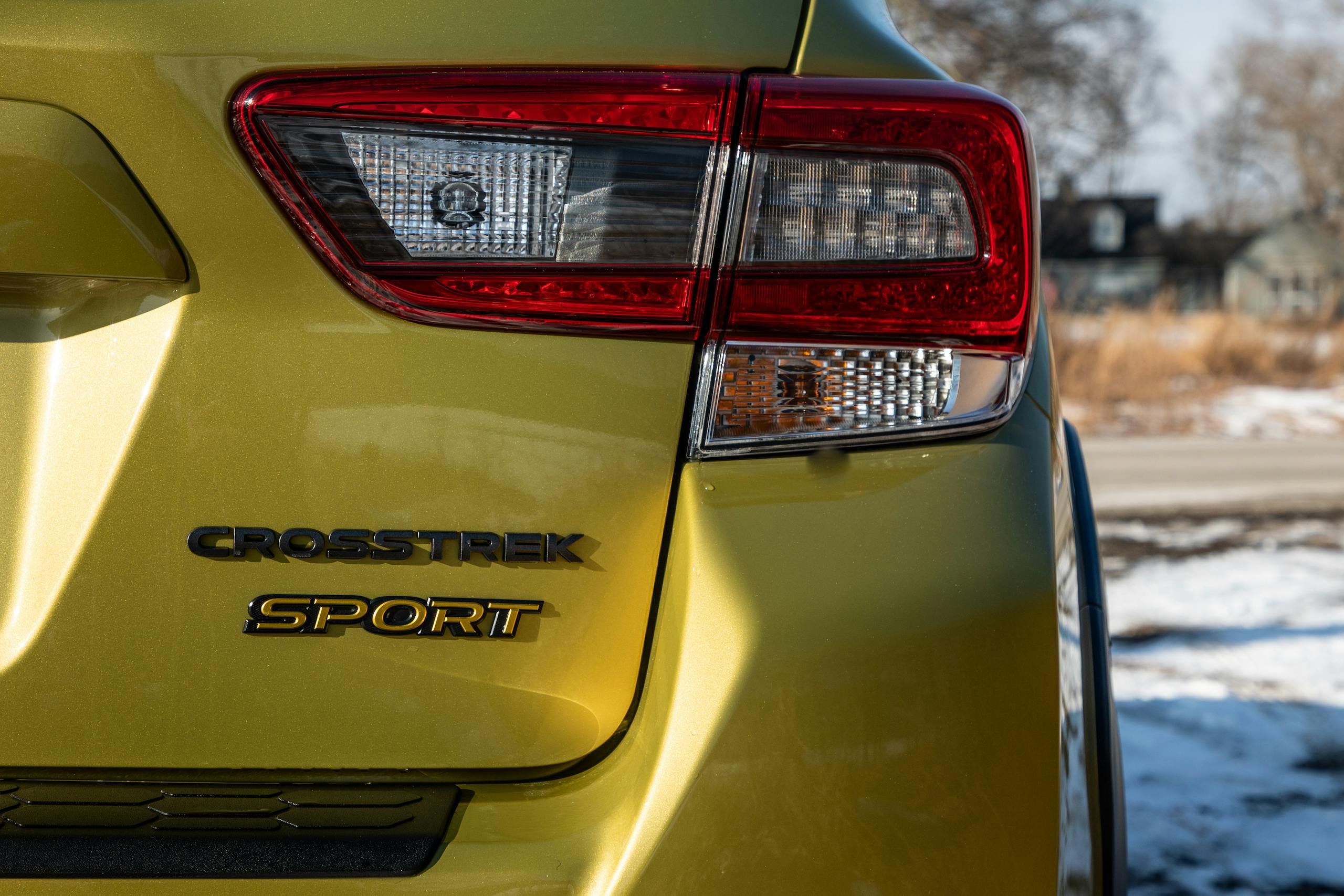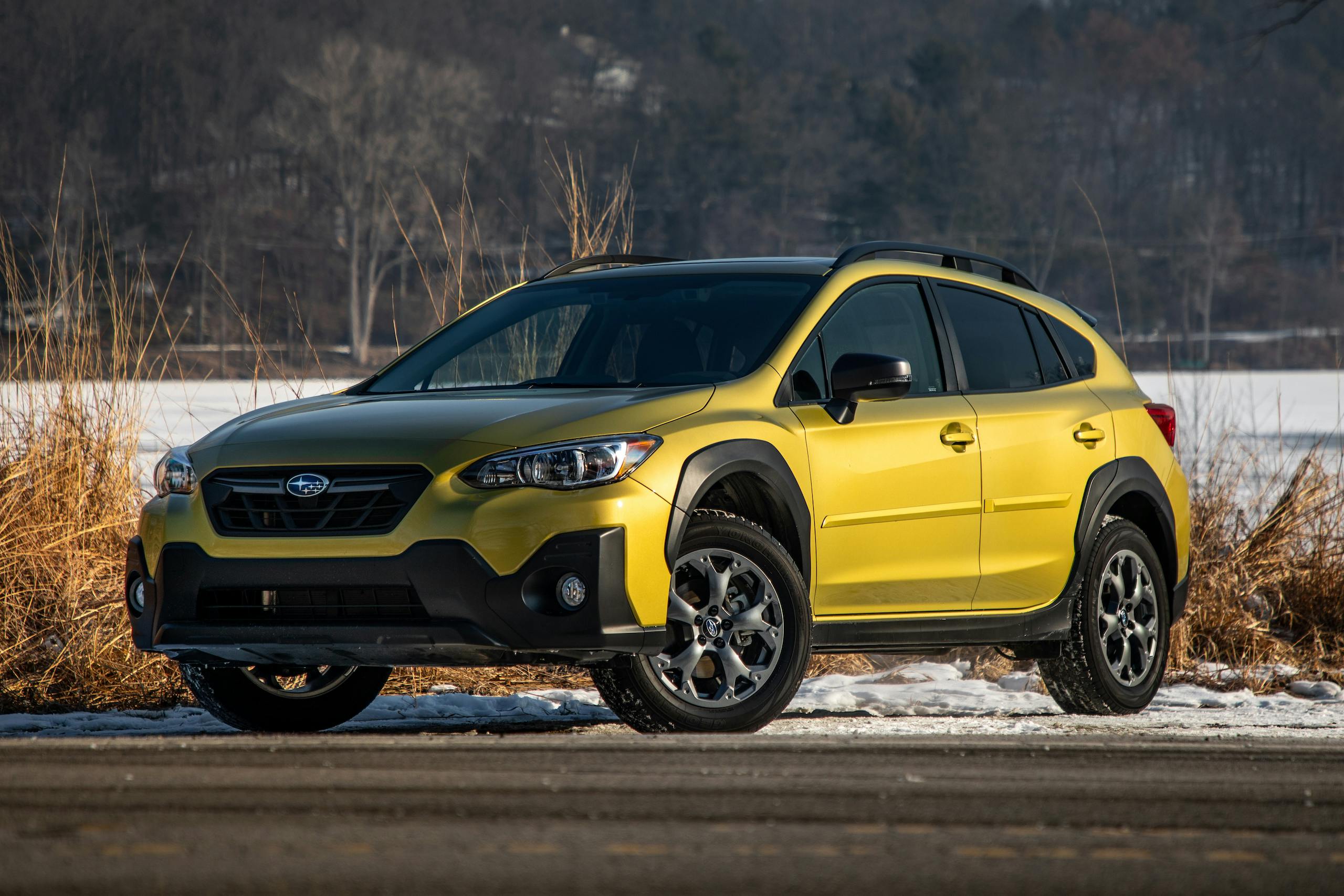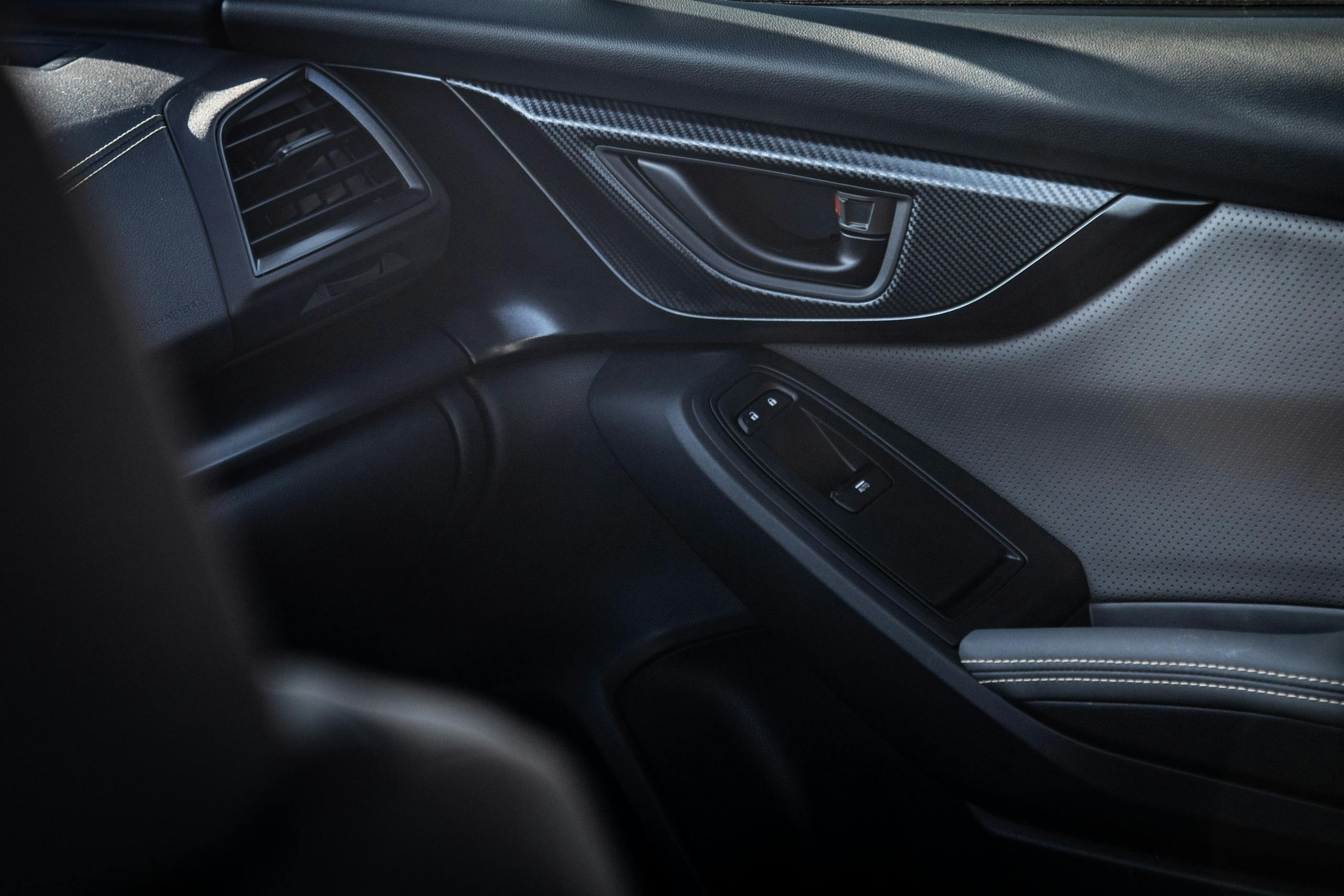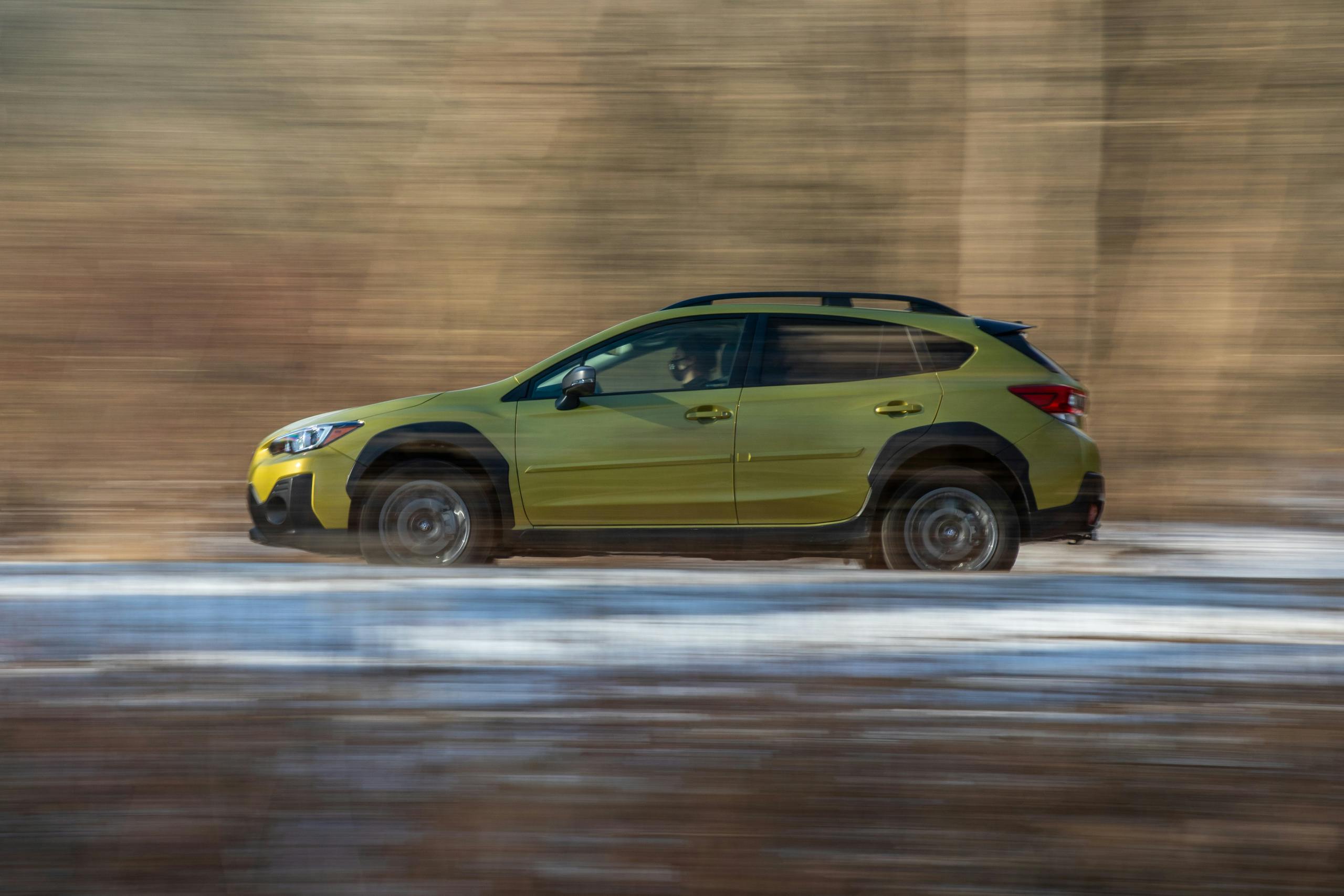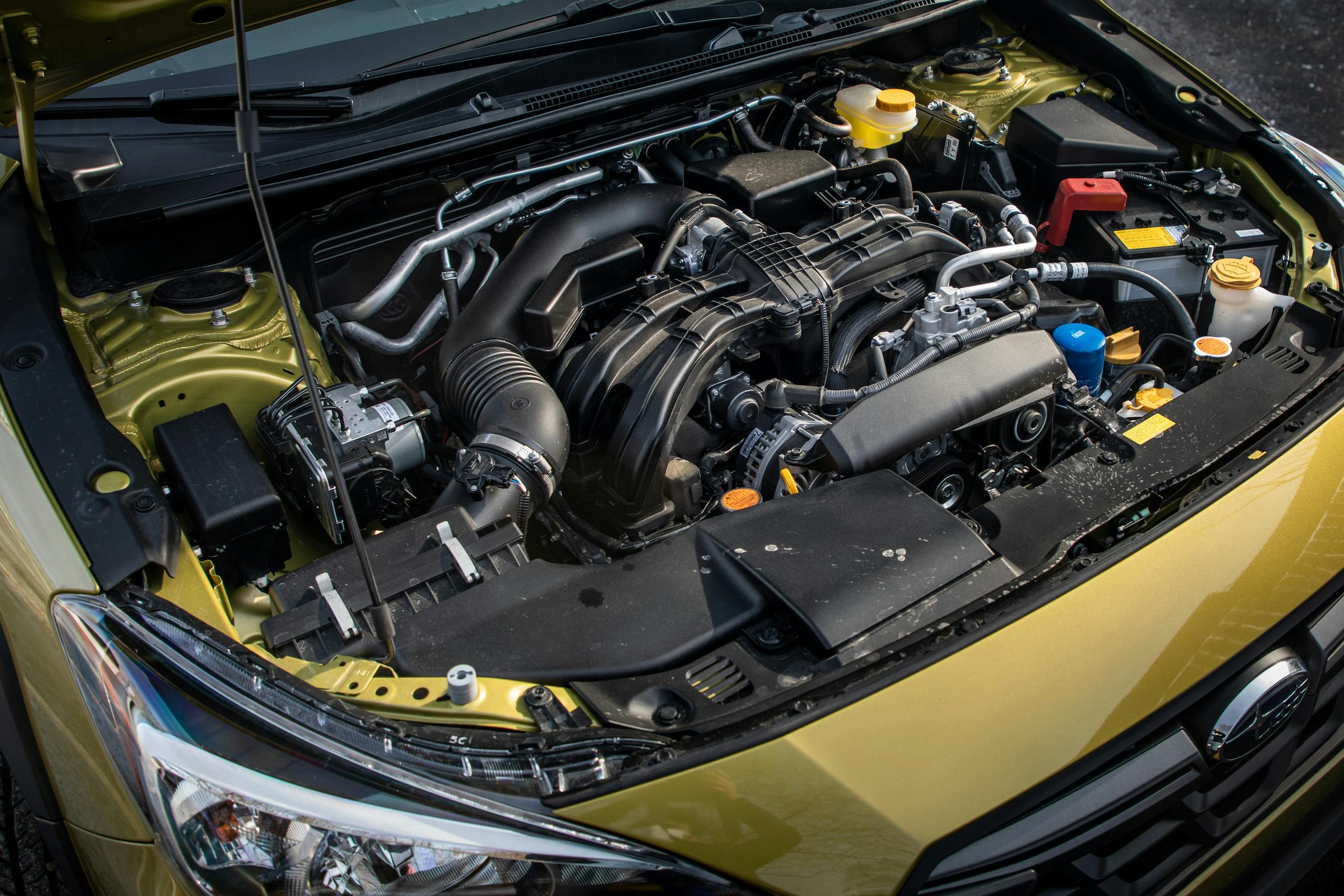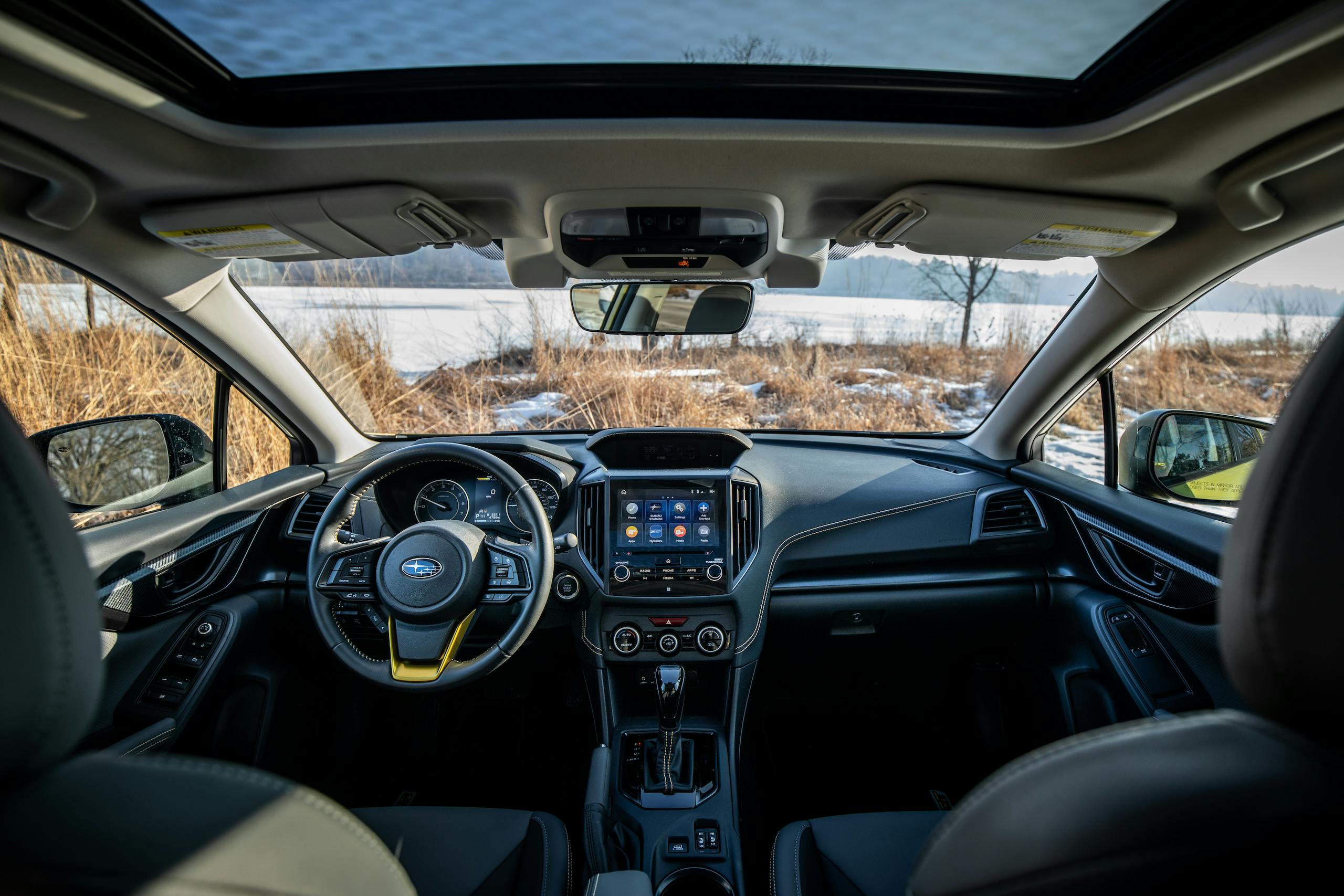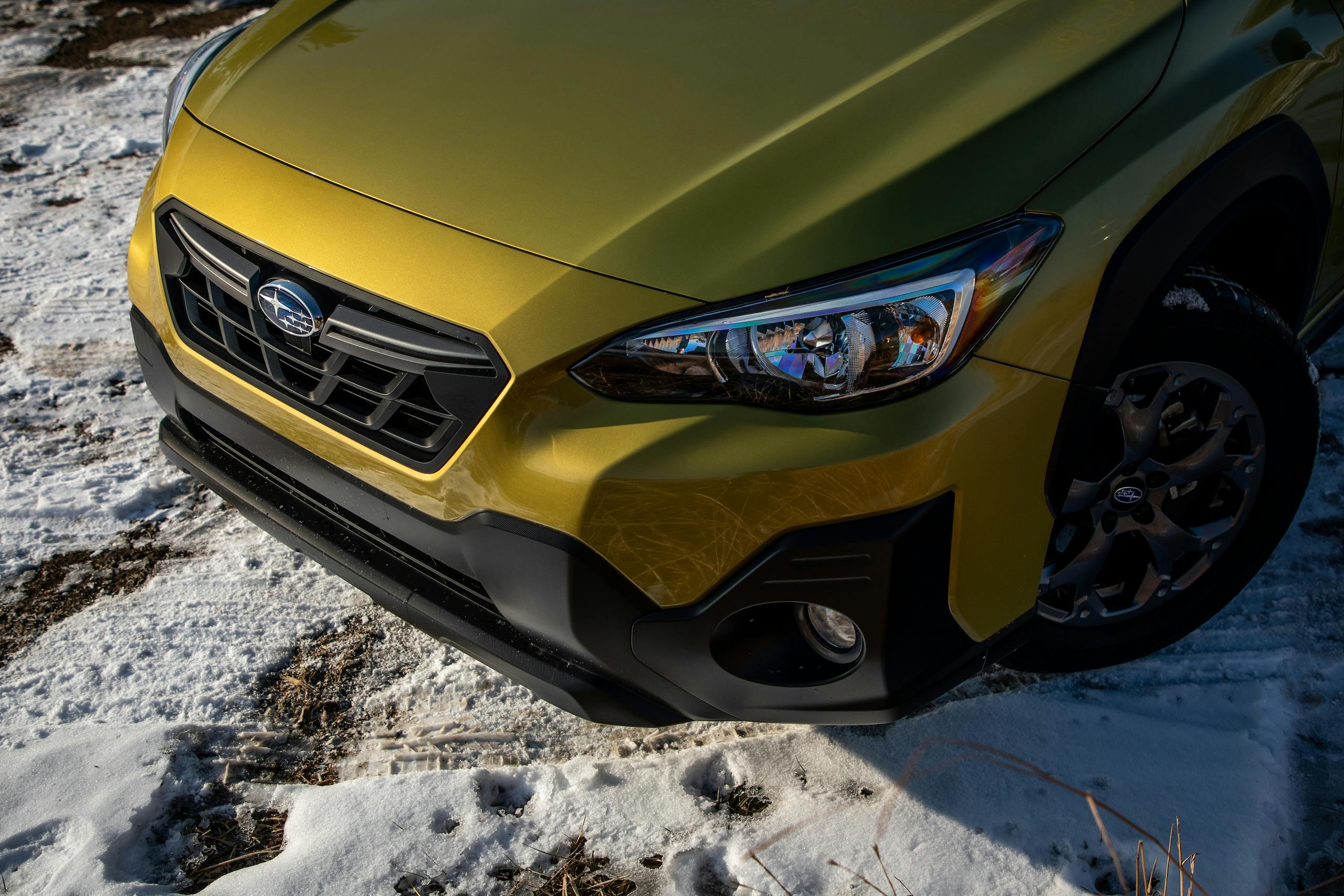Review: 2021 Subaru Crosstrek Sport
Buying a crossover is, in many ways, a vote for indecision. Wagons are more space-efficient. Sedans and hatchbacks handle better. Trucks haul more. Jeeps—the real, solid-rear-axle sort—tackle trails better. The American consumer continues to, quite simply, not care. The 2021 Subaru Crosstrek is a creature of compromise, but it sells very well. For those who regularly deal with pitted streets, mucky back roads, and slushy driveways—and who like the brand’s rough-and-tumble aesthetic—it’s a compelling proposition.
The Crosstrek debuted in late 2011 in Frankfurt, Germany, as the spiritual successor to the Impreza-based Outback Sport. Subaru had aimed the the lifted Impreza at the European market, but when U.S. dealers spotted the high-riding, compact crossover, they convinced Subaru to bring it stateside. Their intuition proved accurate. U.S. sales increased each year from 2013 and 2018, beginning at 54,011 and leaping to 144,834 before falling to under 120,000 in 2019 as other automakers flooded the compact SUV segment.
The second-gen Crosstrek debuted in 2018. Customers liked the look but carped at the powertrain, a 2.0-liter flat-four cranking out a limp 154 horsepower. Adding insult to injury, output was reduced to 148 hp in 2019. The obvious move—swapping in the turbocharged engine from the WRX—seems to be beyond Subaru’s grasp. Instead, we have this 2021 Sport trim, which borrows a 182-horse 2.5-liter engine from the Ascent and sprinkles on more black plastic trim for an edgier persona. The bad news? A CVT automatic transmission is mandatory.
Though the base, manual-equipped Crosstrek starts at $23,295, the Sport is positioned as a mid-tier model (third of five), with a base price of $27,545. Above it, but just barely, sits the $29,045 Limited trim. With options, choosing between the Sport and the Limited involves splitting hairs, but we’ll get to that later. Our tester carried the only available option package for the Sport: a moonroof, Multimedia Plus (read: Sirius XM), blind-spot detection, and a rear cross-traffic alert system, for $1600. With a few aesthetic add-ons, our Plasma Yellow Pearl tester totaled $29,145.
Keen-eyed Crosstrek owners will spot a narrower, more trapezoidal grille, a change which applies to all ’21 Crosstreks. The Sport gets an extra dollop of black plastic body trim and a massaged lower front fascia. Like all Crosstreks (and Imprezas, for that matter) since 2018, the 2021 Crosstrek rides on Subaru’s global platform, raised for an Outback-matching 8.7 inches of ground clearance.

The interior is tidy though not elegant. Apart from the tacky imitation carbon-fiber trim around the door handles, Subaru spent its dollars well here. The more luxurious features—a vivid, decently-sized touchscreen, a leather steering wheel, and heated chairs—are well-executed and balanced by abuse-friendly, function-forward ones, like the waterproof StarTex material covering the two-tone, lime-green-accented seats.
Both the Sport and the next-higher trim, the Limited, get the 182-hp, naturally aspirated 2.5-liter boxer-four from the Ascent and Outback that debuted on the 2019 Forester. The engine represents a 30-hp upgrade over the 2.0-liter four from previous years, which still resides in the base and Premium 2021 models. Torque also jumps from 145 lb-ft to 176. Though a six-speed manual is still available on two lowest trims, the uprated engine is paired exclusively with a CVT.
This engine, despite the power bump, is a buzzy, soulless affair. Raise revs above 2000 and you’re rewarded with a drone. If you leave the powertrain in the default “I” (Intelligent) mode, you’ll need to plan ahead for highway passing maneuvers or exercise a bit of patience. “S” (Sport) mode, accessed via a button on the steering wheel, hands the driveline its proverbial morning coffee. No spines will be tingled, but shift points are higher and throttle response becomes more intuitive. After using up the entire merge lane while joining the highway in Average Subaru Intelligence Mode, punching S became a default move. (A related point: over 500 miles of driving, we failed to match the factory-rated 29 mpg average fuel economy, averaging a not-very-economy-car-ish 25.0.) Paddle shifters are a formality; Sport, in Crosstrek terms, means Highly Tolerable of Bad Driving Conditions, not Flingable or Peppy.
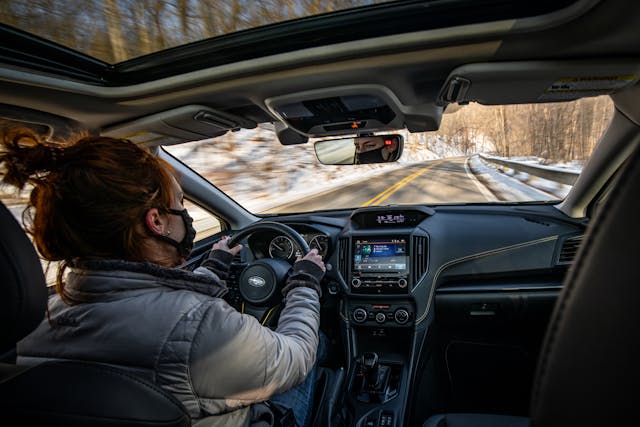
The Crosstrek’s lane-centering tech shares the ping-ponging tendencies of the Outback. The blind-spot detection impressed us, however, by picking up a Durango shot-gunning into the Crosstrek’s blind-spot late one evening on a Detroit freeway. Mercifully, the Crosstrek spares you the flashing, dash-mounted lights of its larger sibling when you approach lane boundaries.
Unsurprisingly, the Crosstrek’s lifted-hatchback proportions compromise blind-spot visibility. In low-speed maneuvers, however, the wide-angle rear camera does an admirable job of taking up the slack. (The video feed vastly improves upon the grainy quality of the 2020 Outback’s. Let’s hope the ’21 Outback receives the Crosstrek’s camera upgrade.) The seating position, which can only be adjusted manually on the Sport, suited your just-shy-of-5-foot-7 author perfectly.

Our CVT-equipped tester featured an active torque-split AWD system, which uses a wet multi-plate center clutch pack to divvy torque between the two axles. Default ratio is 60/40 front/rear, but the system will also respond to aggressive acceleration, for instance, by funneling torque rearward (hence the “active” bit). Such a system is standard on all CVT Crosstreks; Sport and Limited trims differentiate themselves with a second X-Mode function. The system will summon lower gear ratios and deactivate the center clutch pack to better cope with mud and snow (or deep mud and snow, depending on which of the two modes you select). X-Modes are only available below 25 mph; hill descent control, also included on the Sport and Limited, only activates below 12 mph.
Even when scrambling across a snowy, unplowed intersection, the little Subie doggedly kept its nose pointing straight ahead. Pitted dirt roads and three inches of freshly accumulated snow flustered it not. In this sort of daily bad-weather driving, the Sport shines; its off-road credentials suffer, however, when compared to the skid-plated Renegade Trailhawk, directly in this Sport’s $30K price range. The most rugged version of Jeep’s petite SUV sports five traction control modes, can inch over rocks with a 20:1 crawl ratio, and can lock both its front and rear differentials. The Renegade’s AWD system isn’t permanent, like the Crosstrek’s, but it’s much burlier when activated.

Subaru reserves onboard navigation for the top-tier Limited trim, so we grabbed a USB cable and hooked up CarPlay to use Apple or Google Maps when we ventured into unknown territory. The 6.5-inch display paled in direct sun, but otherwise was perfectly up to the task of fielding calls and controlling tunes streamed via Bluetooth from our phones.
Should you spring for the Sport? Depends on how often you encounter deep snow and/or mud, and whether you want the waterproof seats, which are both exclusive to and the only option on this trim. The Crosstrek Limited, which sits directly above the Sport, also gets the more-powerful engine (and both X-Modes) plus leather-clad, power front seats and LED headlights, neither of which are available on the Sport.
The Crosstrek’s biggest strength is its rough-and-tumble vibe. Mazda’s CX-30 handles better, boasts a more luxurious interior, and is generally a more mature, refined vehicle. Kia’s Seltos handily beats both on cargo space. Both the CX-30 and the Seltos are available with all-wheel drive. However, Mazda suffers from low consumer visibility in the States, and Kia hasn’t fully shaken its bargain-barrel reputation. Subaru, on the other hand, is basking in the glow of a hard-won, outdoorsy aesthetic. The Crosstrek, while not burly enough to challenge the Renegade Trailhawk’s off-road chops, is the rugged darling of weekend-adventuring types—and for good reason.
2021 Subaru Crosstrek Sport
Base price/as-tested: $23,295 / $29,145 (as tested)
Highs: Standard, permanent all-wheel-drive tackles the worst of on-road driving with composure. Attractive, car-like silhouette. Reasonable pricing.
Lows: The uprated engine is buzzy and underwhelming, and the CVT doesn’t help. Interior materials sacrifice refinement for durability.
Summary: The Crosstrek finally gains more power, but its most winning quality—a made-to-be-abused personality—remains unchanged.

